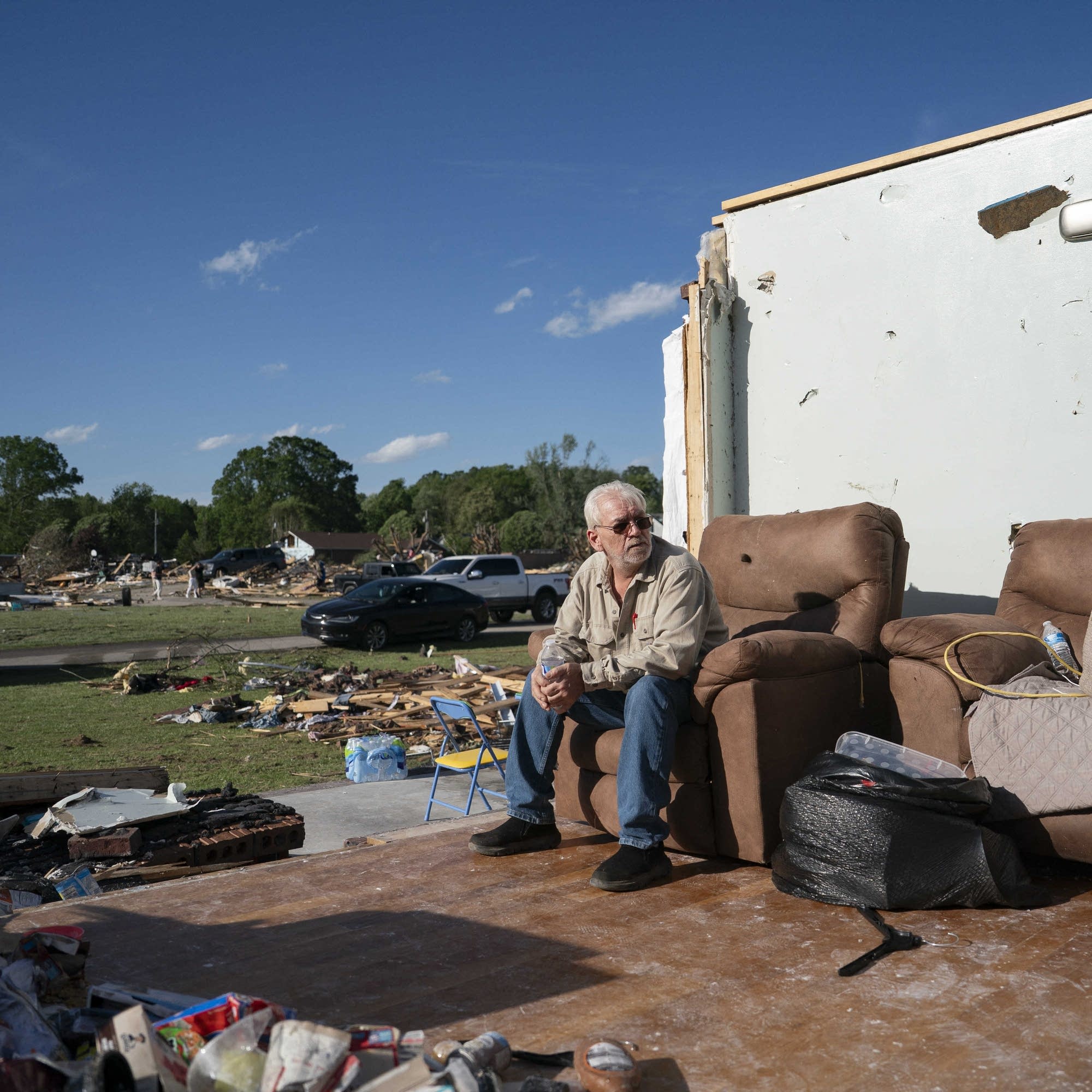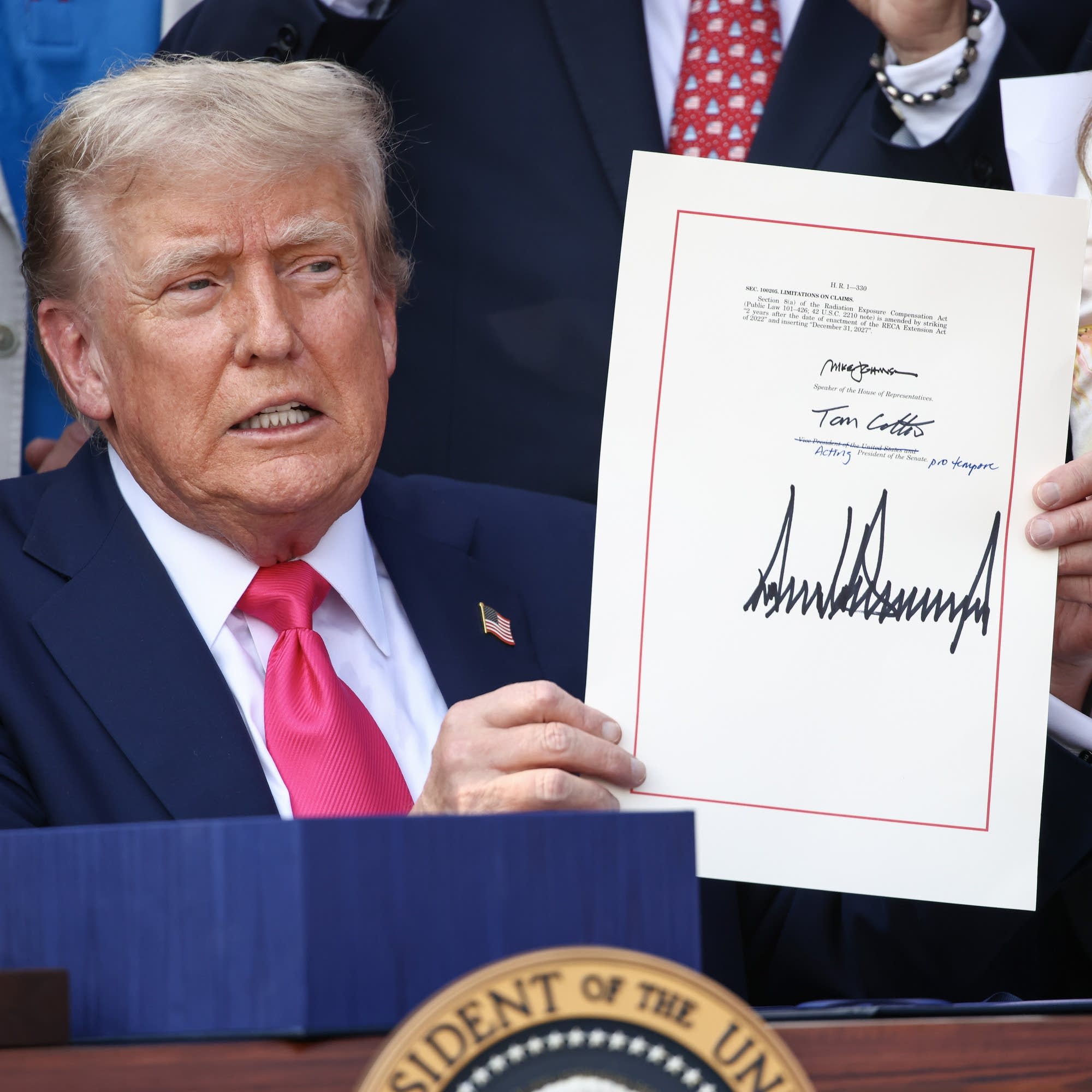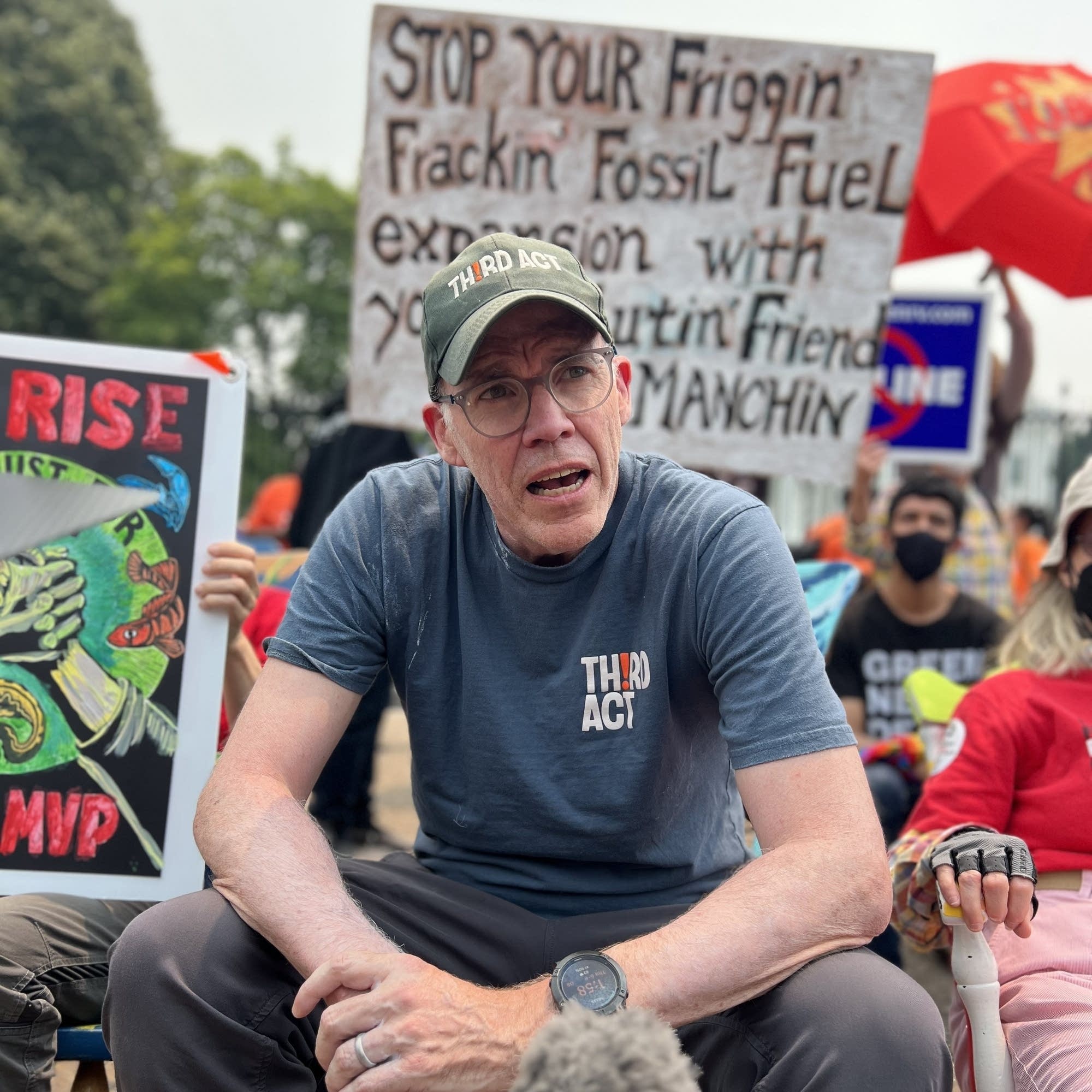Discover How We Survive
How We Survive

How We Survive
Author: Marketplace
Subscribed: 1,373Played: 30,684Subscribe
Share
© Copyright 2025 Minnesota Public Radio
Description
“How We Survive” is an award-winning podcast from Marketplace, hosted by Amy Scott, about the messy business of climate solutions. In the eighth season, we’re taking a closer look at what’s on our plate. We embark on a food tour of the future. We sample “cell-cultivated” salmon and chocolate. We visit farmers in our nation’s breadbasket where hotter, drier, less predictable weather has global consequences. And we’ll take you on the ground into one of the more demonized (and misunderstood) parts of the agricultural system: factory farms.
72 Episodes
Reverse
It’s been quite a year! The “How We Survive” team piloted a new series, “Burning Questions,” answering your most pressing climate concerns. We also spent months traveling across the South West, from Arizona and New Mexico to Nevada and California, to report on the West’s water crisis for our fourth season. We could not have done this kind of reporting without your support. So thank you! Your support keeps our non-profit newsroom and podcasts going and helps us keep bringing you the climate solutions journalism you love. If you’re able, consider making a (tax deductible) year-end donation today.Contribute what you can today at marketplace.org/survive.
Participate in the cycle of life and sequester some carbon while you’re at it — even if you don’t have a city-provided green bin! Caleigh Wells and Candice Dickens-Russell geek out about their own composting methods, and discuss what they’ve learned from an urban farm owner.
We have a special episode for you today. We’re sharing an episode of the new podcast from APM Studios and Western Sound called “Ripple.”The largest oil spill in American history captivated the public’s attention for the entire summer of 2010. Authorities told a story of a herculean response effort that made shorelines safe and avoided a worst case scenario. Was that really the whole picture?“Ripple” is a new series investigating the stories we were told were over.In Season One, the reporting team traveled hundreds of miles across the Gulf Coast to learn the ongoing effects of the 2010 Deepwater Horizon Oil Spill — which are still impacting many coastal residents more than a decade later. Here is episode 1! And if you’d like to hear more episodes, you can find “Ripple” wherever you get your podcasts.
We are working on another season of our series Burning Questions and we want to hear from you! What are your most pressing climate questions? Are you trying to figure out when to invest in an electric car? Or maybe you want to make climate-friendly changes to your diet?Whatever your question is you can send us a note or a voice memo to survive@marketplace.org
The Colorado River, vital to the American West, faces a crisis as demand surpasses its supply due to rising temperatures and unsustainable usage practices. As millions depend on its waters for survival, challenges like rampant growth and water-intensive farming further strain this precious resource. Across the region, communities must rethink water distribution and utilization to adapt to a drier future.In this special, we follow Leigh Harris and her husband Franck Avril, residents grappling with water scarcity in their dream home built on a dry lot. Their journey underscores the urgency of finding affordable water sources amidst worsening drought. Additionally, we delve into technological innovations, from desalination to rain water, offering potential solutions to the crisis. We also examine a growing movement, rooted in Indigenous values, to give nature — rivers, fish, crops and trees — the same rights as people, and what that might mean for the future of the Colorado River.
In the wake of Hurricane Helene and Hurricane Milton, the internet was flooded with conspiracy theories and misinformation, ranging from false claims that the government geo-engineerd the storm on purpose, to false rumors around FEMA blocking aid from people who needed it.In this installment of “Burning Questions,” “How We Survive” host Amy Scott interviews climate scientist Katharine Hayhoe to find out what drives conspiracy theories after a climate disaster and what we can do to combat misinformation with our friends and loved ones. Resources to combat misinformation:Katharine Hayhoe’s toolsYou can also check out Katharine’s “Talking Climate” newsletterFEMA’s hurricane rumor responseSkeptical Science resourcesNational Climate Assessment
Last week’s elections delivered climate wins and setbacks. What will a second Donald Trump presidency mean for climate policy going forward? What can President Joe Biden accomplish in the remainder of his term? And how did state climate measures perform? Host Amy Scott talks with Washington Post climate reporter Shannon Osaka to unpack it all.
This week, we’re sharing another podcast we like from our friends at Outside Magazine.A quarter of the money at the world’s largest banks goes directly to funding fossil fuel projects. But what if it didn’t? In this episode of “Outside Podcast,” reporter Cat Jaffee calls customer service at her bank — one of the world’s largest financial institutions — to ask them if they might consider investing her money differently. It goes about as well as you’d expect.
Since early January, historic wildfires have been burning across Los Angeles. Over two dozen people have died, and more than 10,000 homes have been destroyed. Insured losses may exceed $20 billion. In the months prior to the fires, thousands of Los Angeles homeowners were dropped by insurers. Some moved over to the state-funded insurance FAIR plan while many others remained insurance-less. In this episode of “Burning Questions,” the How We Survive team surveys the devastation on the ground in the Pacific Palisades and host Amy Scott talks with Carolyn Kousky from the Environmental Defense Fund to find out if the future is insurable and what that might mean for the housing market.
June marks the start of hurricane season but thanks to the climate crisis we’re dealing with extreme weather year-round. Just in the past month, deadly storms have devastated Kentucky and a brutal heat-wave is surging across the country. With the recent cuts to NOAA and the National Weather Service, weather stations are understaffed and weather forecasting might be impacted. In this episode of Burning Questions, host Amy Scott talks with former National Weather Service Director Louis Uccellinni to find out how the cuts to NOAA impact all of us.
Last week’s massive spending and tax bill, named the “One, Big, Beautiful Bill Act,” was signed into law by President Trump. It includes major cuts to clean energy incentives, pushed forward by the Biden Administration’s signature climate law, the 2022 Inflation Reduction Act (IRA). The new law is a huge setback against cutting emissions and transitioning to clean energy. “How We Survive” host Amy Scott talks with Shannon Osaka, climate zeitgeist reporter at The Washington Post, to find out how this will impact the climate crisis and how consumers can take advantage of clean energy tax credits while they’re still around.
A cheap and accessible form of energy lies in a large ball of burning gas 93 million miles up in the sky: the sun. So why haven’t we adopted solar energy more widely? “How We Survive” host Amy Scott recently talked with longtime climate writer and activist Bill McKibben about his upcoming book “Here Comes the Sun: A Last Chance for the Climate and a Fresh Chance for Civilization.” In this exclusive extended interview, McKibben explains how solar power has had explosive growth in the past few years, why it’s not widely adopted in the U.S. (and ways to change that) and offers some hopeful examples of how solar power has been adopted around the world.
The climate crisis is here. The Western U.S. is burning, much of the Northeast is underwater after a hurricane and towns in Europe are swept away by massive floods. Time is slipping away to stop the worst effects of a warming planet, and the world is looking for solutions.On “How We Survive,” Molly Wood explores the technology that could provide some of those solutions, the business of acclimatizing to an increasingly inhospitable planet, and the way people have to change if we’re going to make it in an altered world.Decarbonization requires a lot of batteries, and many batteries require lithium. The need for lithium is driving a modern gold rush for the metal that could save the world, but relies on an old, dirty technology: mining. This season, we’ll dive deep into the economics, the tech and the human stories behind the rush for “white gold.” And unlike the gold rush of the 1800s, this time, our survival might depend on it.It all starts Oct. 6. Listen to the trailer now and be sure to follow the show so you don’t miss an episode.
To get off fossil fuels, you need a lot of batteries. To get a lot of batteries, you need to mine a lot of lithium. Welcome to Thacker Pass, Nevada, where a proposed lithium mine has sparked protests from farmers, ranchers and the native Paiute–Shoshone tribe.Some tribal members reject the idea that they should sacrifice their ancestral home for the climate fight, while others say that their history is being distorted and co-opted by protestors. And farmers and ranchers in the area who have never had to sacrifice their way of life really don’t want to. We traveled to Thacker Pass to report on a fractured community thrust to the front line of the fight to save us all.
Mining is a complicated business. It’s destructive, it’s dangerous. But in order to get the lithium we need to power the energy transition, mining could be a necessary evil.In this episode, we go from protests in South America to a gold mine in Nevada, where we take a ride on what looks like a massive Tonka truck, all in the hopes of finding out if there’s a better way to do things while getting the metal we need to survive.After talking to mining experts, environmental justice advocates and a very vocal CEO, we get some answers.
To survive the climate crisis, we need to electrify everything: our cars, of course, but also our appliances, homes, mass transit, entire neighborhoods and cities. Everything. That’s no small task. So to better understand why electrifying everything matters, and how we’re going to do it, we look at the aftermath of a natural disaster and talk to one man who used batteries to save lives. Then we spend a little time with an entrepreneur whose vision for an electric future includes turning every building into a Tesla (sort of). And we talk to U.S. Energy Secretary Jennifer Granholm on how we can seize this moment.
We’re back on the road this week, to California’s Salton Sea, a salty lake in the desert that was once marketed as “Palm Springs with water.” Today the water is receding and increasingly toxic. The community that once thrived here now has one of the highest unemployment rates in the country. But there is some hope. There’s a huge amount of lithium all around the Salton Sea in the bubbling hot brine deep underground. Some hopeful modern-day 49ers have big plans to get it out. If they can only succeed, the lithium here could meet 40 percent of the world’s demand.
Our journey through the California desert continues. We visit the quiet front-runner in the race to extract lithium from the superhot, corrosive brine bubbling underground. And we dive into the past to look at an earlier attempt to harvest lithium from the Salton Sea. That project ended in failure, but its patents live on. And those patents could be a roadblock for the companies racing to extract the “white gold” today. With millions of dollars invested and a global supply of lithium waiting below the Salton Sea, there is a lot on the line.
Our favorite place to look for climate solutions: Science fiction. In fact, sci-fi (and its sub-genre, cli-fi) is what got us thinking about adaptation in the first place. Cli-fi can get a little bleak — weather turns deadly; earth becomes uninhabitable; humans flee to space. And while it’s entertaining to imagine the worst-case scenarios, the best of the writing is hopeful. It allows us to dream up solutions that don’t involve billionaires, rockets or climate-changing satellite stations. This week, Molly sits down with climate fiction author Kim Stanley Robinson to discuss his most recent book, “The Ministry for the Future,” which almost reads as a blueprint for saving the planet.
Imagine a future where all the lithium we need has already been extracted from the ground and is endlessly recycled. Or where the batteries we use to store renewable energy are made from abundantly available materials — like salt.This episode, we visit a lab where a couple of brilliant scientists are trying to build the batteries of the future. And we drop in on a company that’s extending the life cycle of lithium through something called “urban mining.”



















This episode had a practical positive message when I needed it.
Excellent episode!!
Remember Greenland was a totally green pasture land. Now it is mostly frozen over. Should the planet get warm as scheduled so Greenland can be a pastureland as it was in the past?
Shipping hot dangerous chemicals. Ask East Palestine how safe that can be.
Someone asked "what's wrong with us?" , the answer is that we believe every Chicken Little that comes along.
Should have plugged Mount Saint Helens when we had a chance. Yellowstone Hot springs, here we come.
10 Years, then ? The calendars of the past are filled with "too late" dates. Still flying 400 private jets to the "too late" meetings and conferences. Still buying seaside mansions.